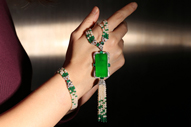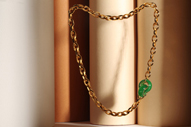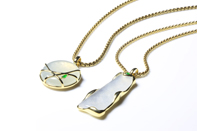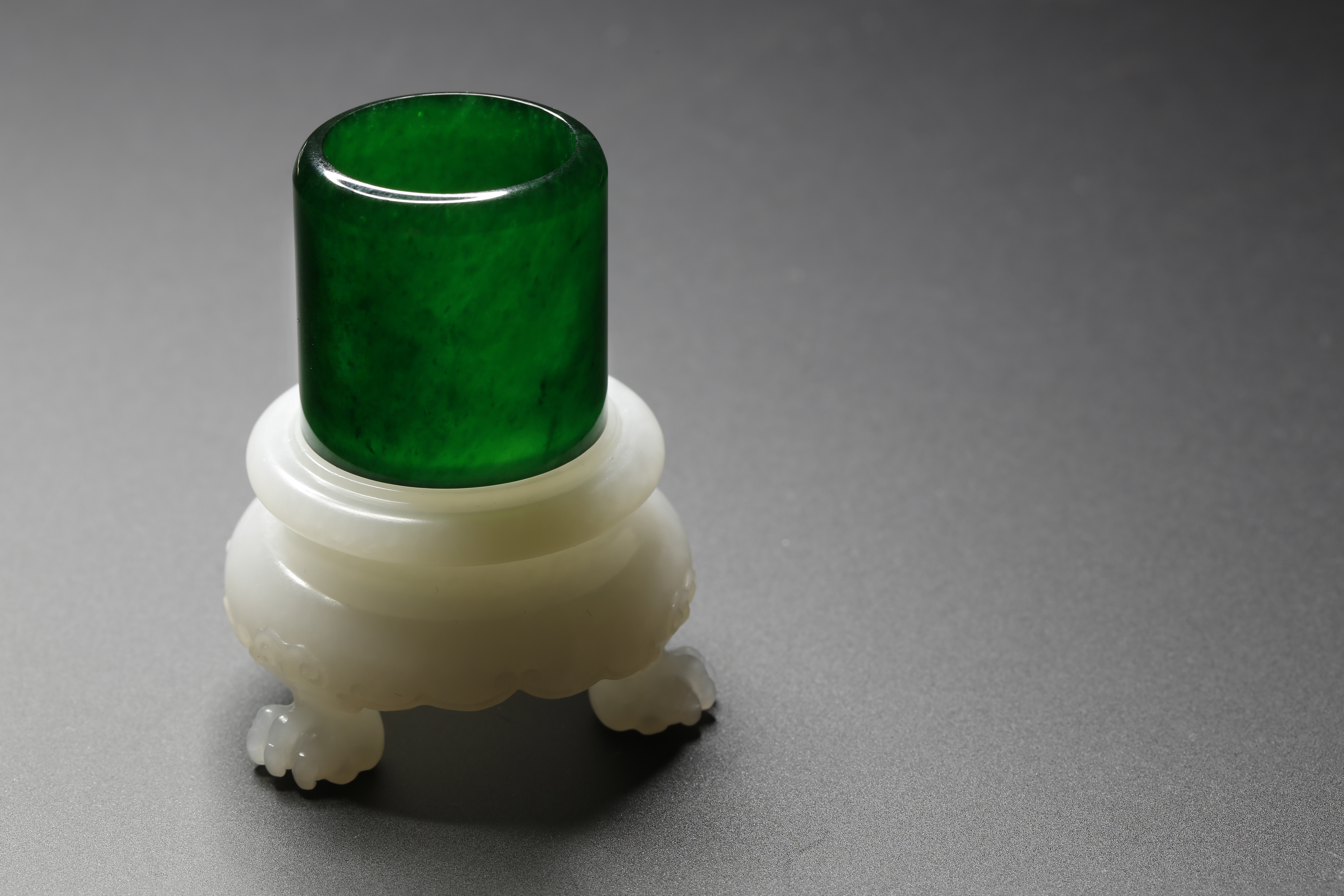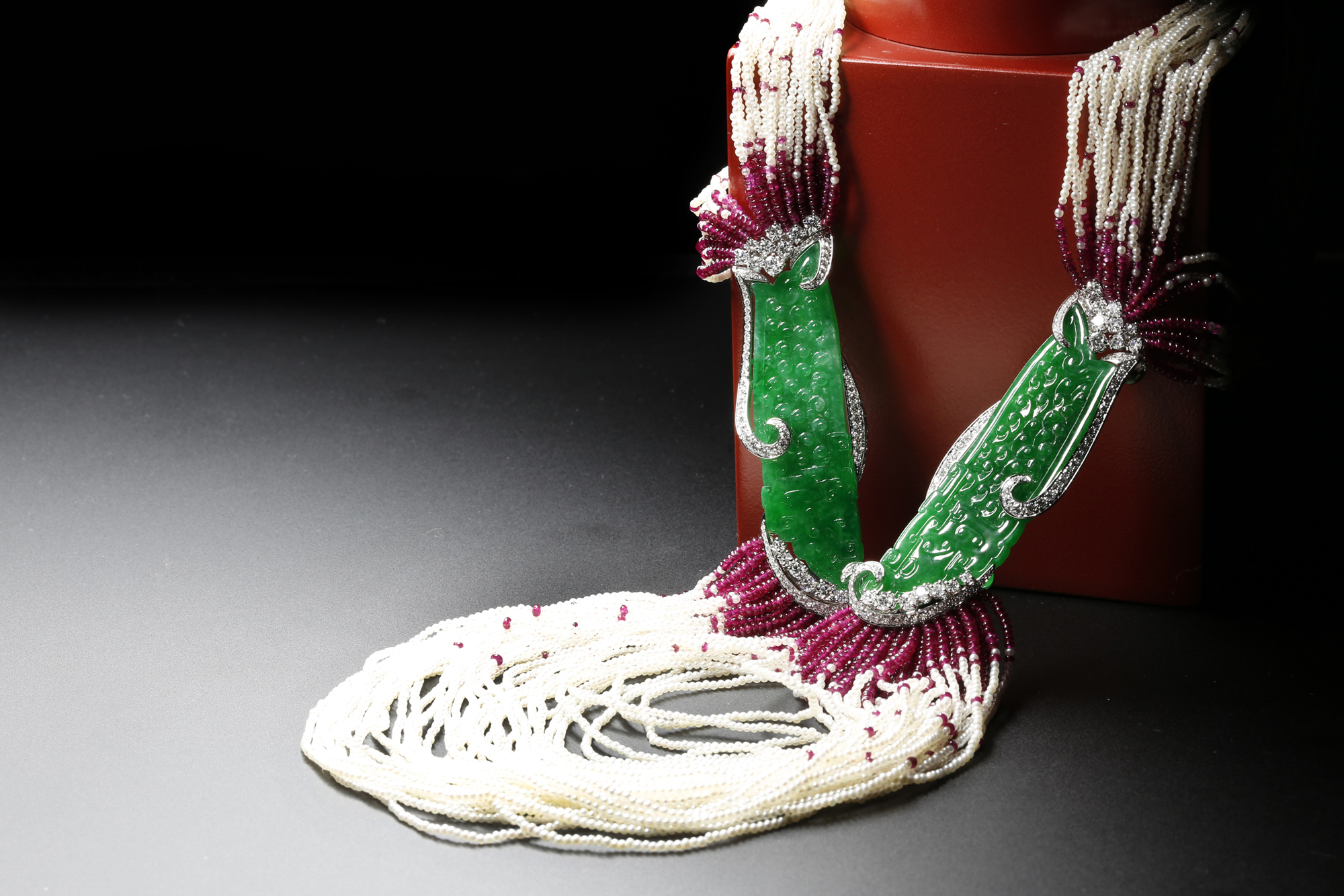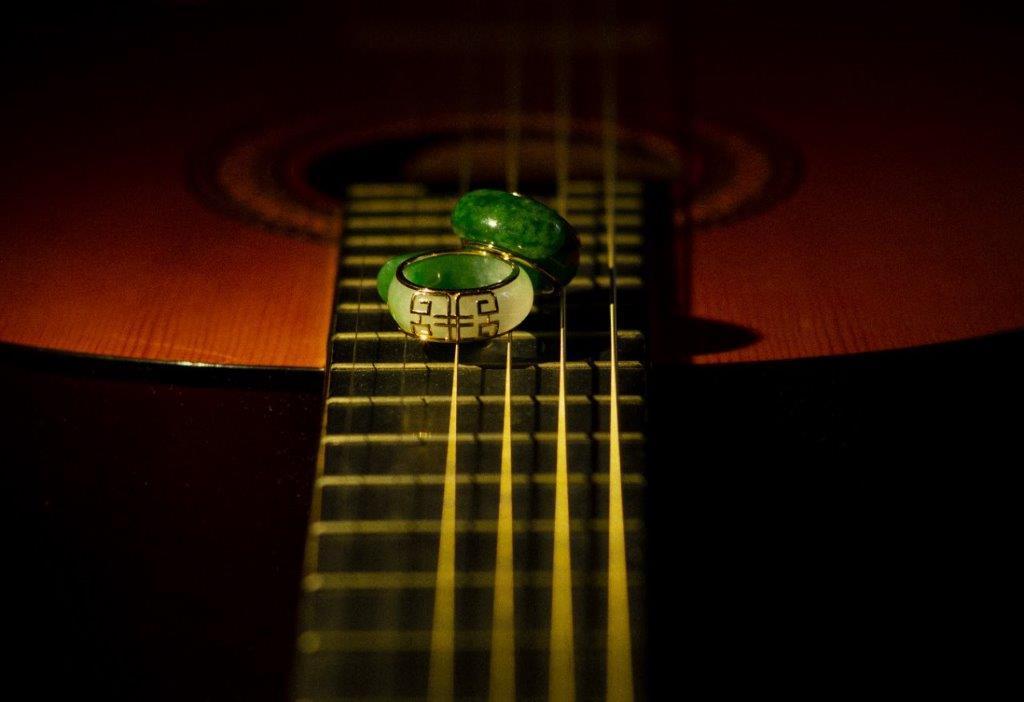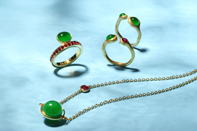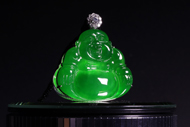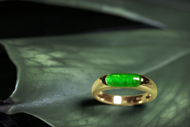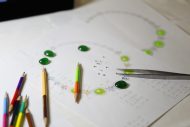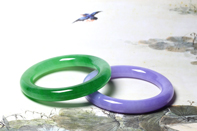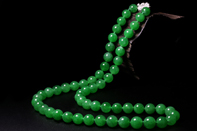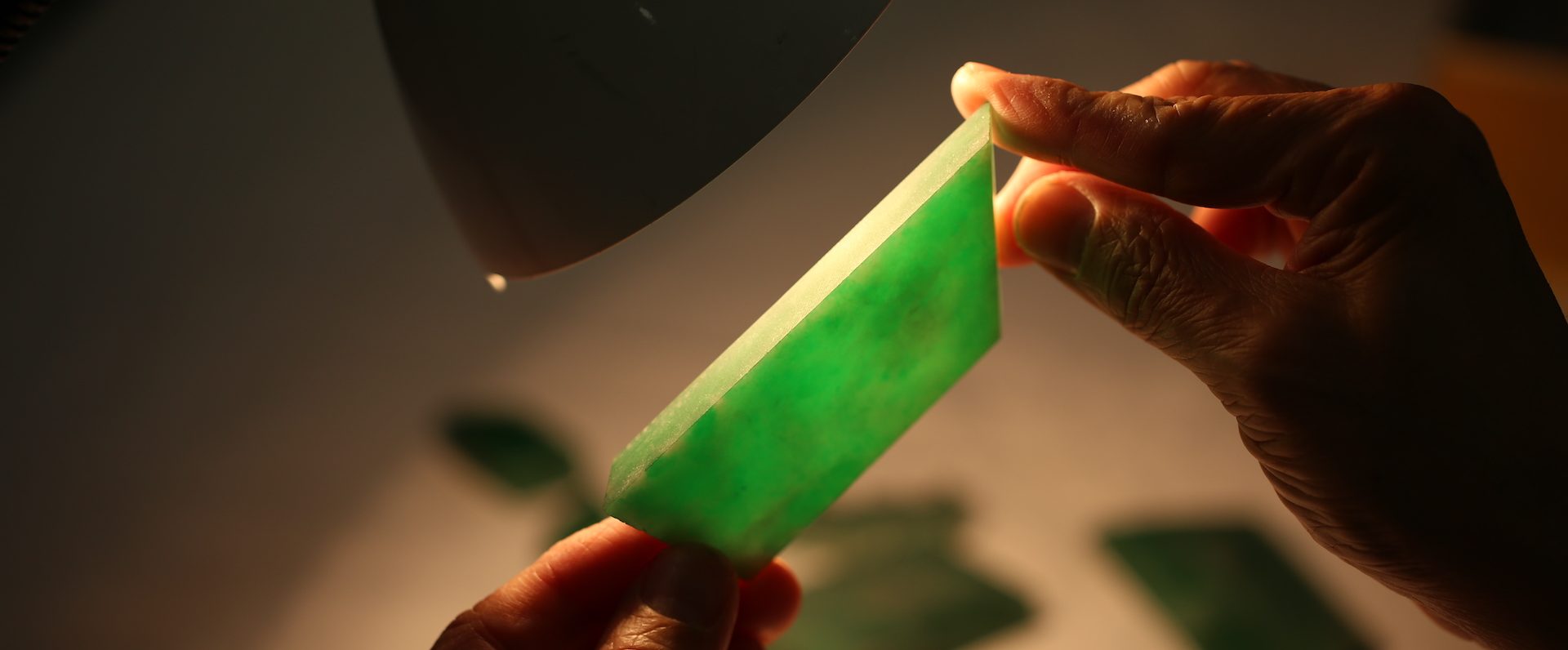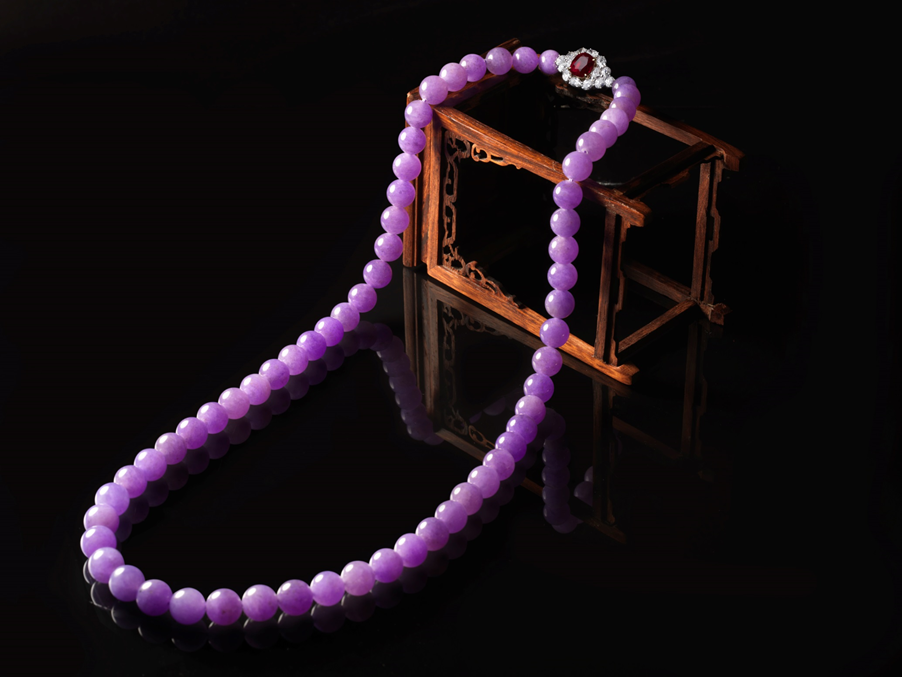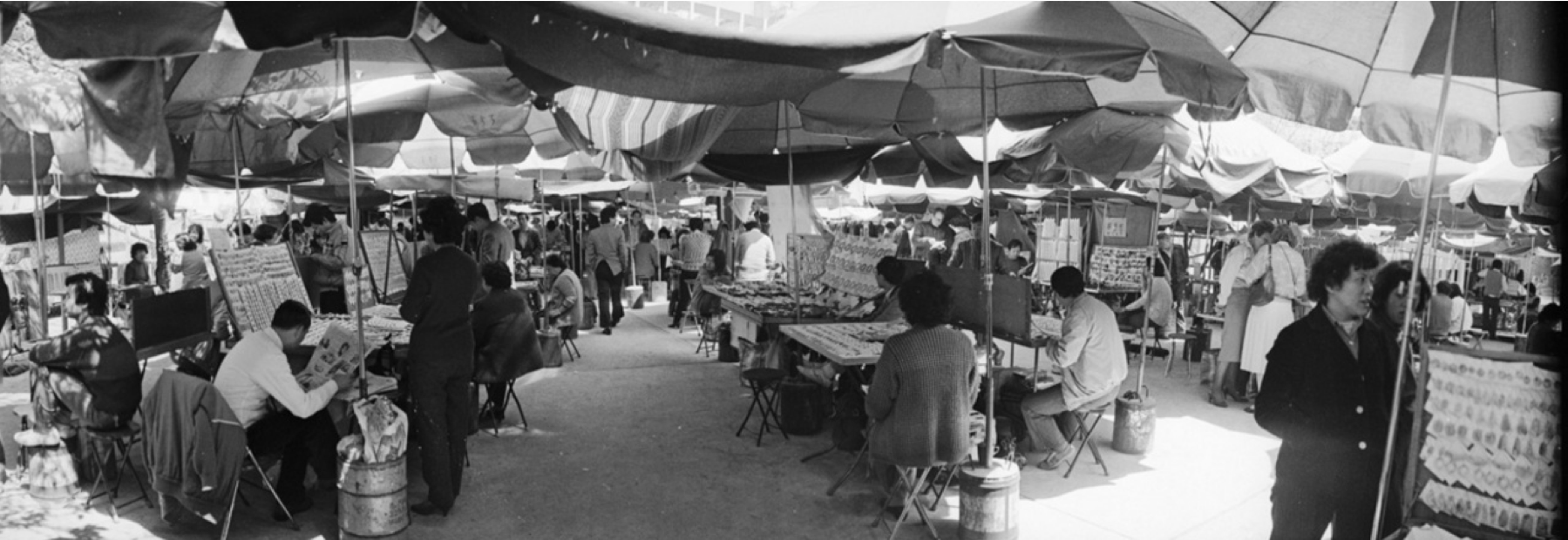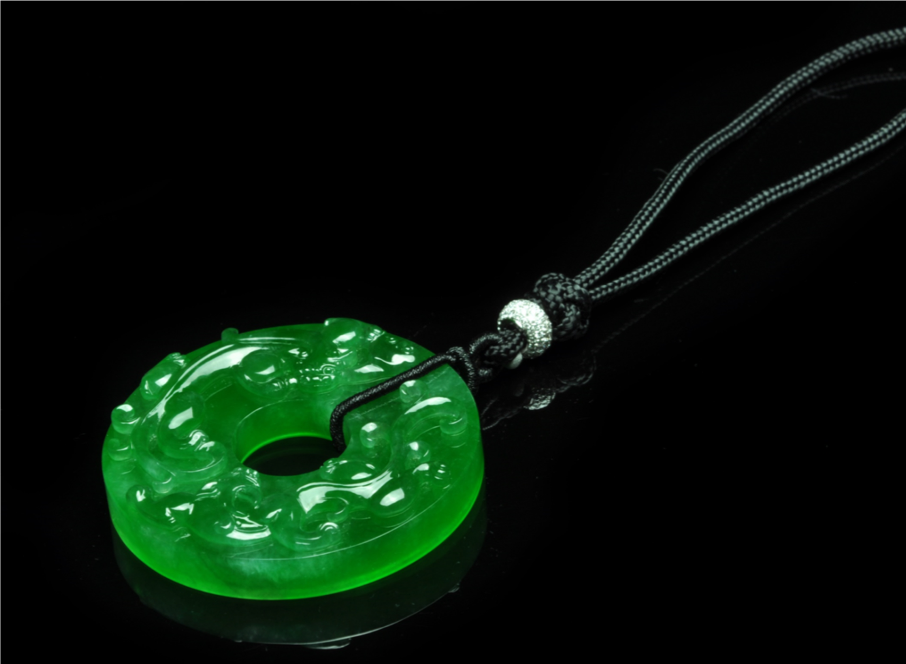Until now, Myanmar has been the only country in the world that is able to produce gem quality jadeite jade rough stones. As we all know, jadeite is the rarest of many jade stones. Only the Phakant mining area in the northern part of Myanmar can produce these beautiful stones. Experienced gemmologists and mining personnel explained that in the mines of Myanmar, jade roughs are all buried deep underground, thus, in order to find these stones, they would even need to level a mountain to do so and start digging down. Some jade mines have been known to be around 500 meters below sea level in order to start digging a mine and in these vast projects, tens of thousands of miners and hundreds of excavators are needed.
Even though these types of mining projects are large and profitable, there are multiple safety risks to be considered, yet the mines cannot be guaranteed to yield the right quantity or quality of jadeite. According to the statistics of the Myanmar Ministry of Mines, in the jade mining industry, 99% of rough stones that are dug out may not be fine jadeite quality, one out of every hundred jadeite rough stones is qualified for high jewellery making. So it is not an exaggeration to say that the chances of finding fine jadeite is one in a million.
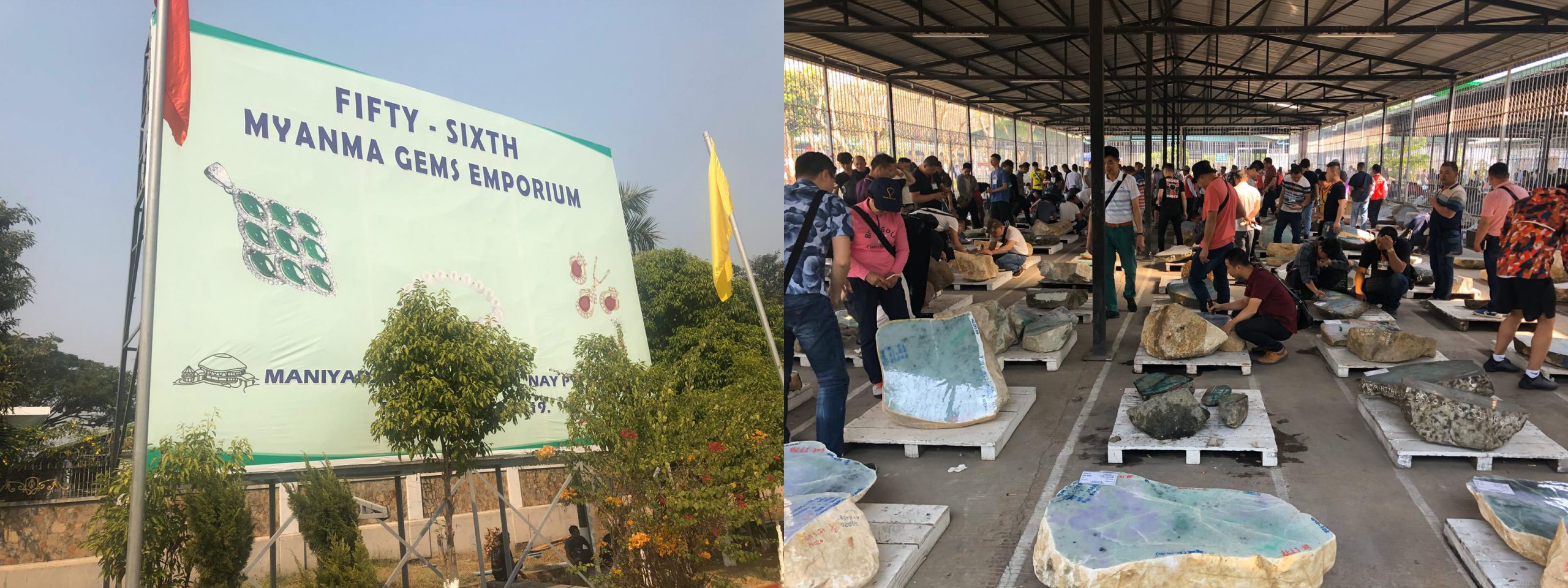
Ambience of the Myanmar Gems Emporium
All sellers and jade merchants engaged in the industry of jade will annually meet and gather in Myanmar’s capital, Naypyidaw, to attend a government-hosted jadeite rough auction which is called the Myanmar Gems Emporium. But because the supply of jade in the country is affected by the weather and current political situation, the annual number of auctions they can hold may vary from one to three times per year. Each time the auction is opened, it is bound to attract jade merchants from all over the world, hoping to buy their very own piece of jade.
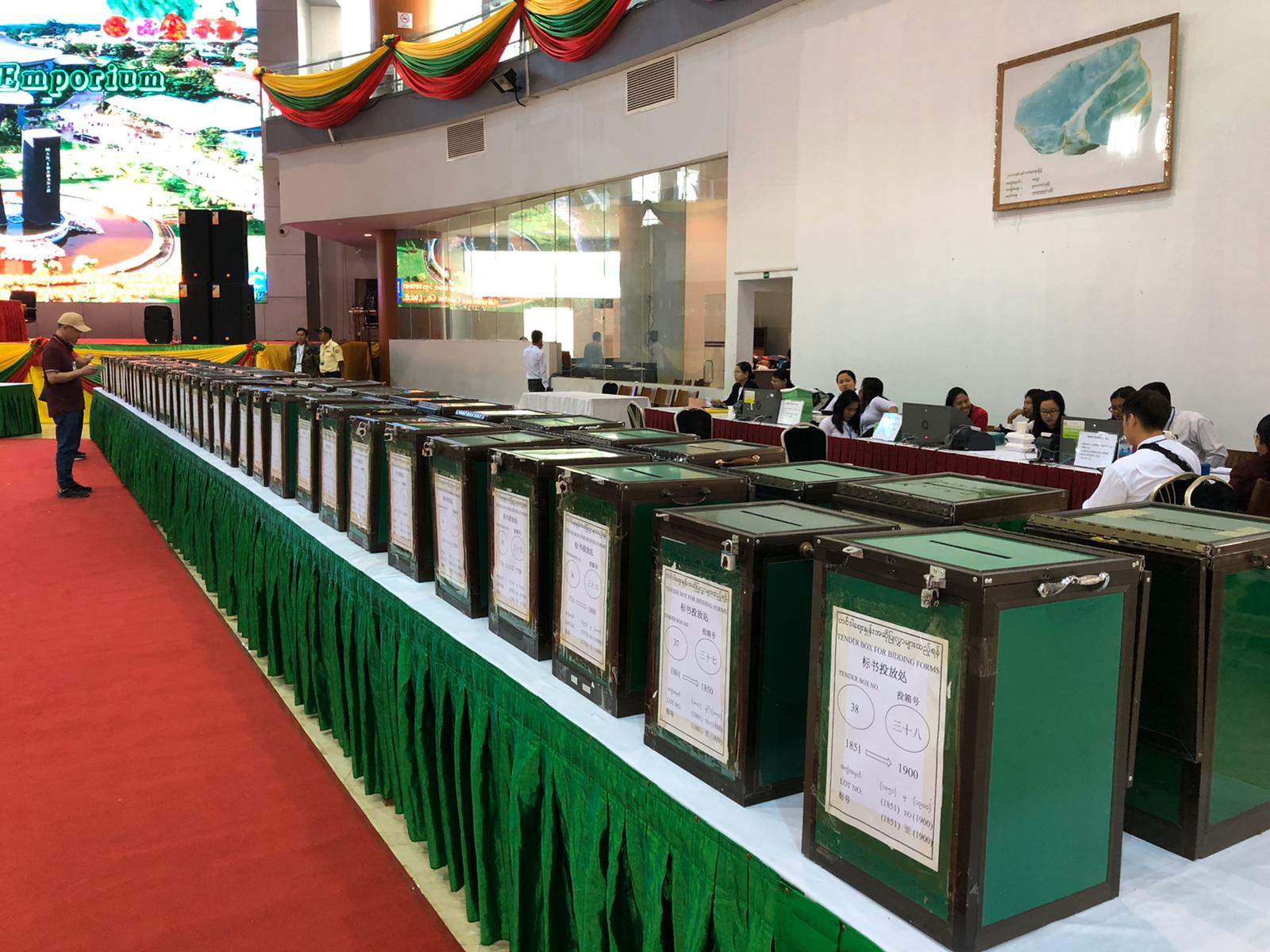
Myanmar Gems Emporium are conducted in the form of open tender system
Myanmar Gems Emporium are conducted in the form of open tender system. Buyers must spend at least one week’s time viewing thousands of rough stones. By very few clues, they will have to decide whether the stone is an “old stone” or a “young stone”. Old stone usually means that it has been mined from an older cave. Generally, the state of the finished product from an old stone is more attractive than before it has been cut, while a young or “tender” stone is just the opposite. Therefore, many people prefer to buy old stones over the younger stones. The bidding price for a good jadeite rough stone can easily reach few million Euros and it is impossible for buyers to instantly make assumptions about the quality of a stone by simply looking at its appearance. As a result, the roughs are cut open into two or more sides to allow buyers to see the quality of the stone from the opened sides (windows) such as its colour distribution and hue, transparency, inclusions, cracks etc. But every piece of jade stone is different and has its unique characteristics. No one can be sure whether the condition of the jade underneath the surface is the same which begs several questions: Does the colour reach in deep enough? Will the colours change deeper in? Will flaws of the jade increase? Will the particles and granules become larger? Those factors must rely on a jade buyer’s previous experiences and he/she must make an important decision within few days by setting a bidding price.
Every jade merchant has his/her own technique for calculating things. For example, some people are more experienced in making carved pieces (Guanyin, Buddha etc) and their technical level is higher than an average person. They would pay more attention to bidding for the rough stones that can be used for making carvings. But because there are so many talented masters and craftsmen alike, jade merchants must accurately calculate the total cost of the finished product and the scraps (the by-product material in the stone, which is not intended to be a finished product) apart from the rough stone in order to estimate how much they can sell it for. Only then can the seller set a specific target bid. Because the auction is conducted in the form of a silent bid meaning all bids will not be disclosed. The organiser will only announce the name of the successful bidder and the bidding price one day after the bidding deadline. If you bid too conservatively, the chance of winning is slim. If you are too aggressive, the chance of winning will increase but the cost of the finished products will also increase, making it riskier that you may lose money. The Myanmar Gem Emporium is like an arena because only the ones who have great skills and luck can win at the end.
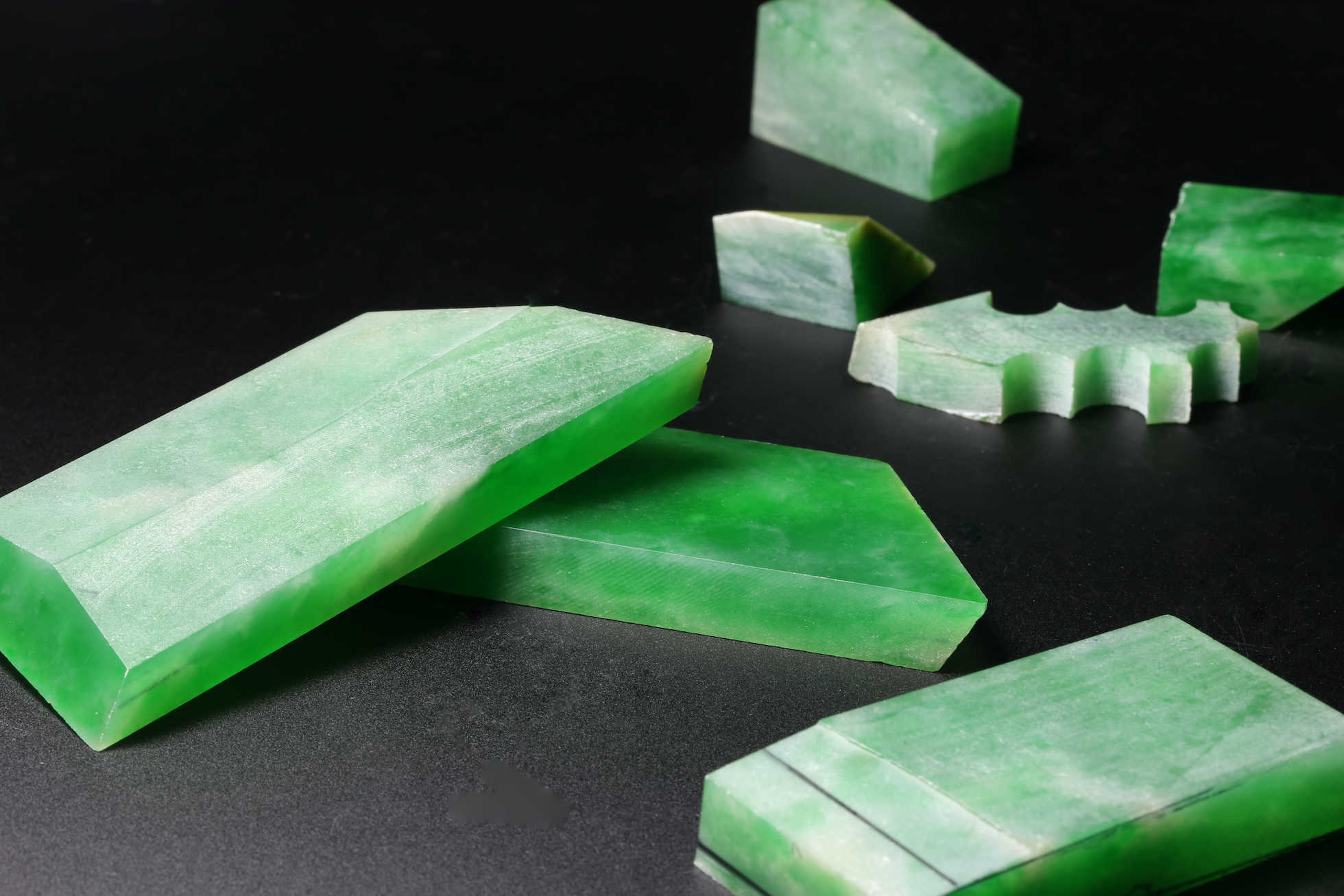
Aside from the jadeite auction in Naypyidaw, rough jadeite stones can still be bought in other cities around Myanmar (Mandalay, Yangon) as well as several cities in Yunnan and Guangdong Provinces in China. However, many of those stones are “masked stones” (completely uncut, without the surface shown). Buying these stones is like gambling. You never know what is inside and it requires you to take high risk. In a nutshell, high quality rough jadeite stones are extremely rare throughout the market and very few can turn into top jadeite pieces, which sometimes money can’t buy.


